Whether you live in the sunbaked South, or are experiencing massive heat waves in your temperate garden, learning how to grow heat-tolerant edibles will help you survive another hot summer growing season.
After moving from the milder climate of the Midwest to the high humidity and heat of sub-tropical Florida, my gardening methods (and seasons) have changed dramatically. Instead of looking for frost-tolerant plants, I now seek out those that love the sunshine.
This article focuses on edibles you could grow in a home garden or raised bed. There are many more types of edibles such as shrubs, trees, herbs, and fungi. You can learn about them in future articles.
Here are my favorite choices for growing common garden veggies and fruits in a hot summer garden.
Table of Contents
- My Top 10 Favorites
- Other tried-and-true Heat-lovers
- Florida Favorites
- Tips for Choosing the Best Varieties
- Where to Find Seeds and Starts
- Conclusion
- FAQs
My 10 Favorite Heat-Loving Edibles
When the late spring and summer weather is well over 85°F, and the humidity starts to build, only the most heat-loving plants survive in our gardens. Here are my 10 favorites that have survived year-over-year in USDA Hardiness Zone 9.

Sweet Potatoes. These tasty tubers are the easiest edibles I’ve ever grown. I just plant them when the soil warms in the spring and let them go. Occasionally, flea beetles or rabbits may do a bit of nibbling, but other than that, they’ve been trouble-free. We harvest them every year October through December, saving enough tubers for the next spring’s planting.

Seminole Pumpkin. These squashes are sub-tropical and were grown by the Seminole people before Florida was colonized over 500 years ago. They are related to butternut and calabaza squashes, and taste like butternut. They thrive on neglect, just keep an eye out for caterpillars or gummy stem blight. Care for them like other pumpkins and squashes.
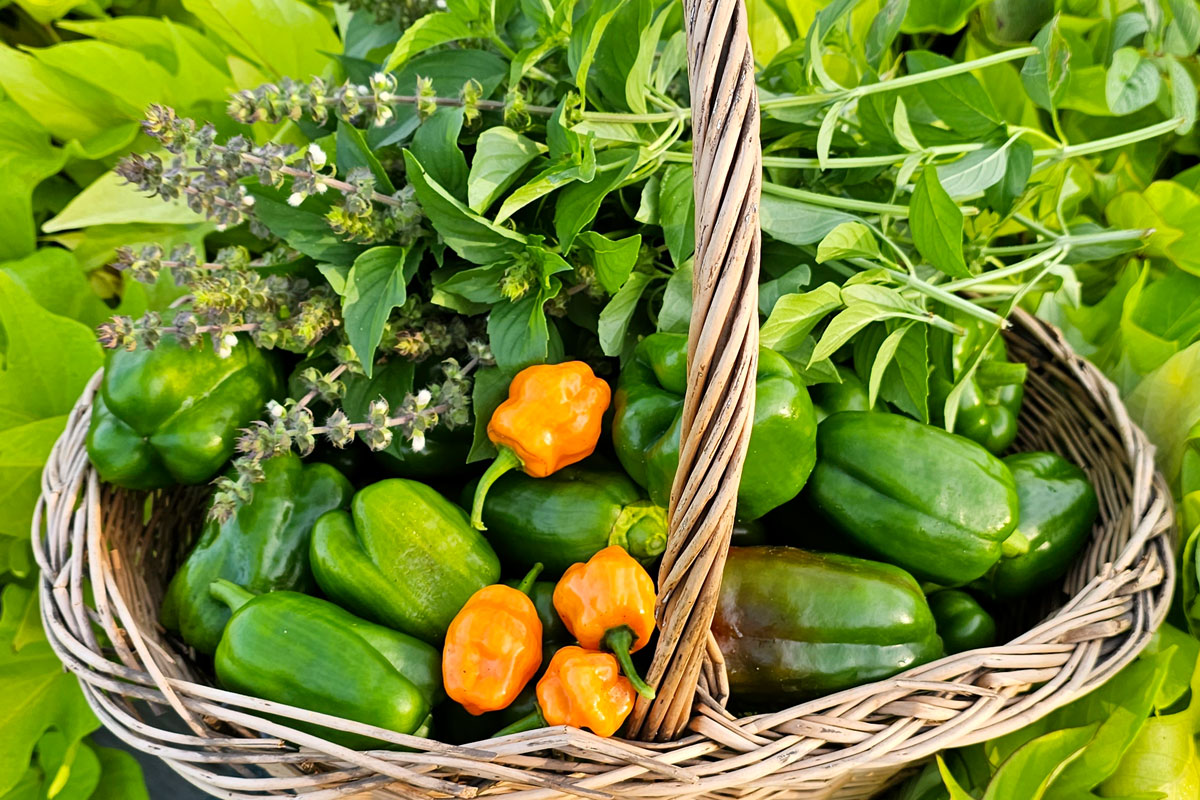
Peppers. Green bell peppers, chilies, hot peppers… they all take the heat well and thrive during the summer. We keep them mulched and well-watered during dry periods.

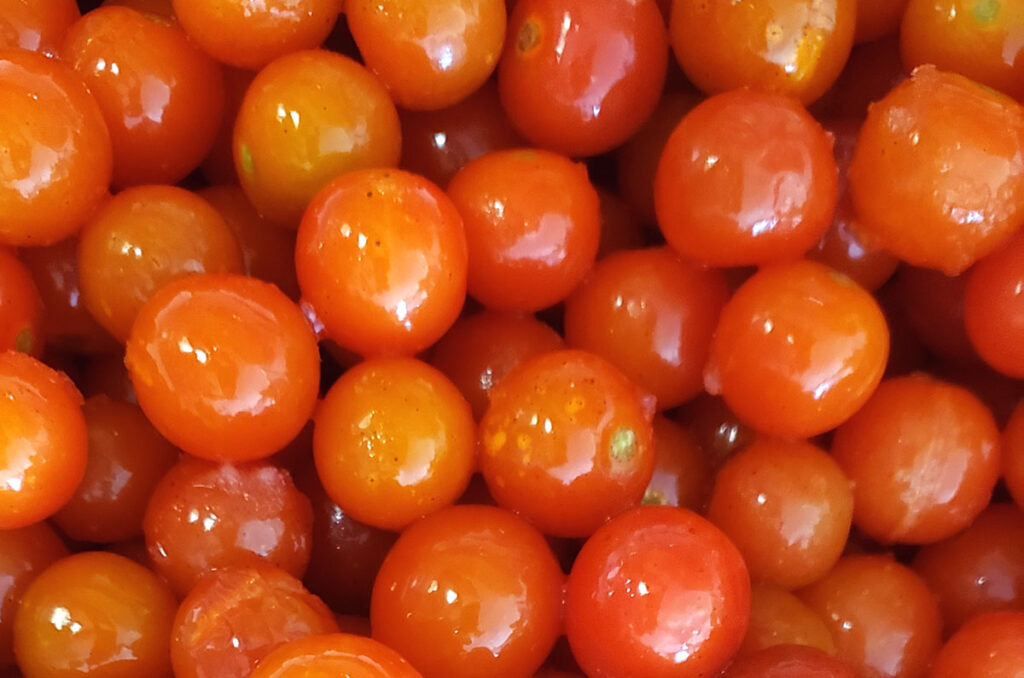
Tomatoes. Over the years, I’ve only been able the consistently grow Everglade tomatoes during our summers. Other tomatoes suffer over 90°F and our climate encourages plant diseases and pests during the summer. The Everglade tomatoes have adapted and produce an abundance of tiny tomatoes that are great to toss in a salad or just eat by the handful.
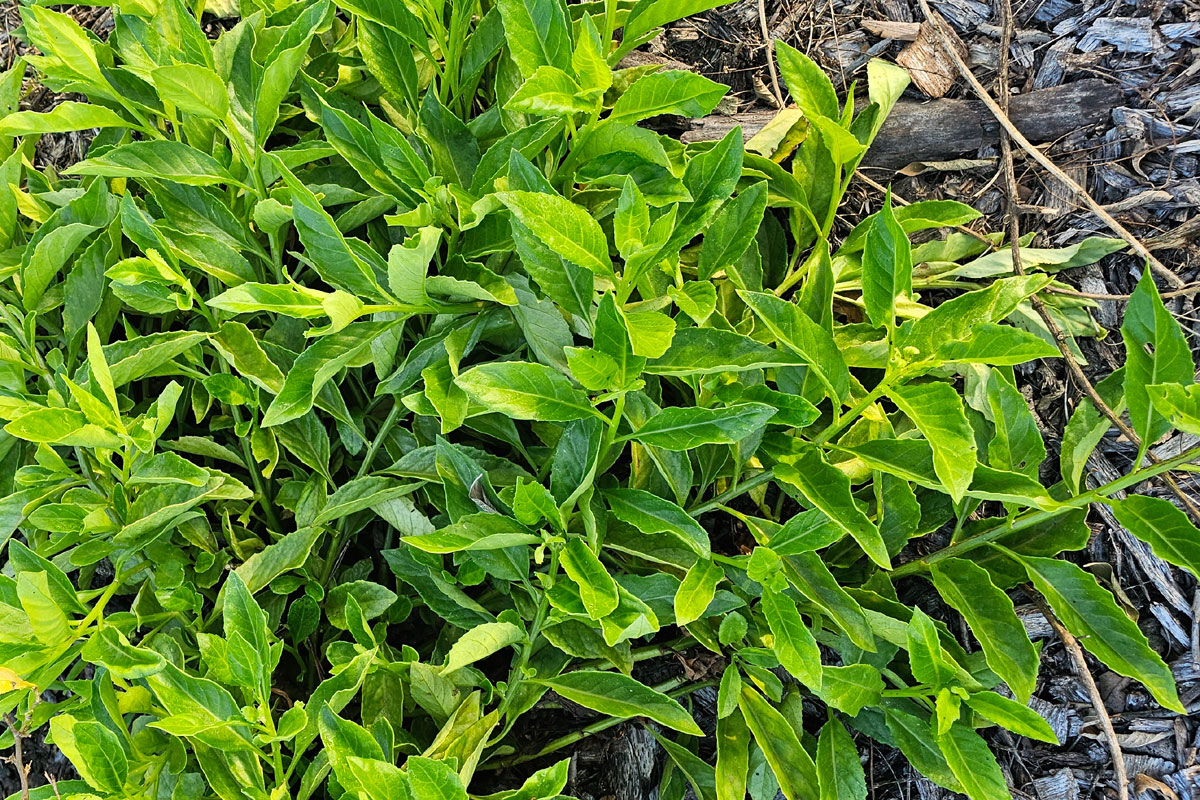
Tropical Spinaches. Okinawa spinach, longevity spinach, and Malabar spinach. While not true spinaches, these three are great substitutes for spinach during the hot months. All three have different flavors which can enhance any summer greens salad. I also grow them as a ground cover in my food forest.
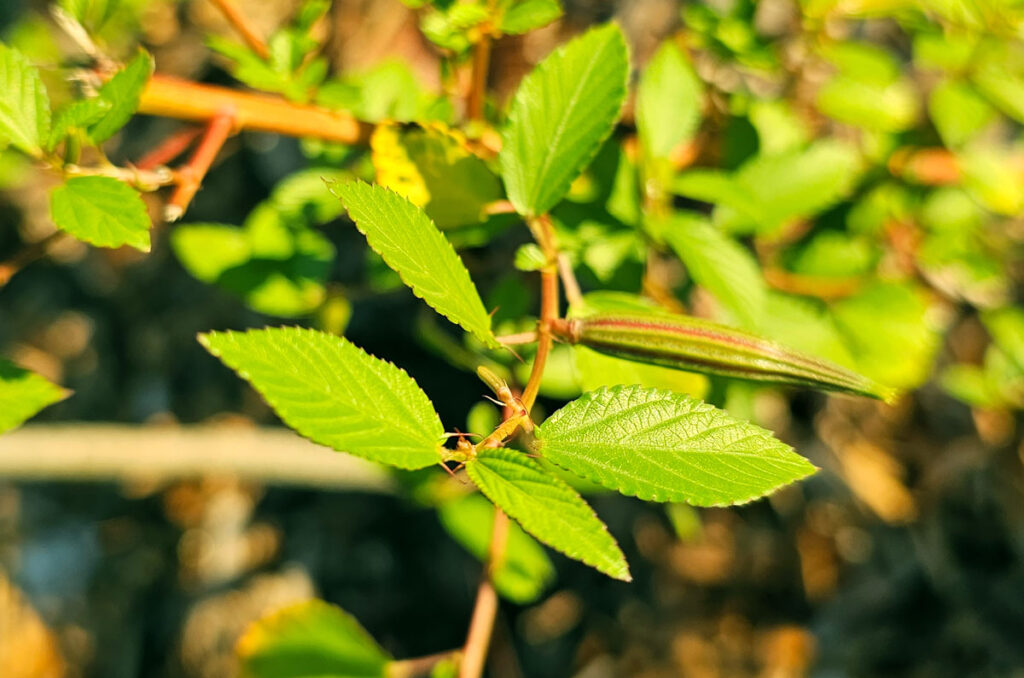
Egyptian Spinach. This plant is native to Egypt and is commonly known as Molokhia or Mulukhiyah. It is related to okra and is a member of the jute plant family. It is grown around the world in similar climates with many different cultural names. The leaves and young pods are edible. It is often cooked as a stew and served over rice or meat. I enjoy the leaves fresh in mixed salads and have cooked them as a substitute for spinach.
Southern Peas. These hardy plants are actually beans. The three types are crowder, cream, and black-eyed. They are nitrogen-fixing plants like other legumes, meaning they have the ability to fix atmospheric nitrogen, and produce their own nitrogen. However, we still make sure they have a nutrient-rich soil to grow in. We grow black-eyed peas during the summer in some of our raised beds as a cover crop and harvest the beans for many hardy winter meals.
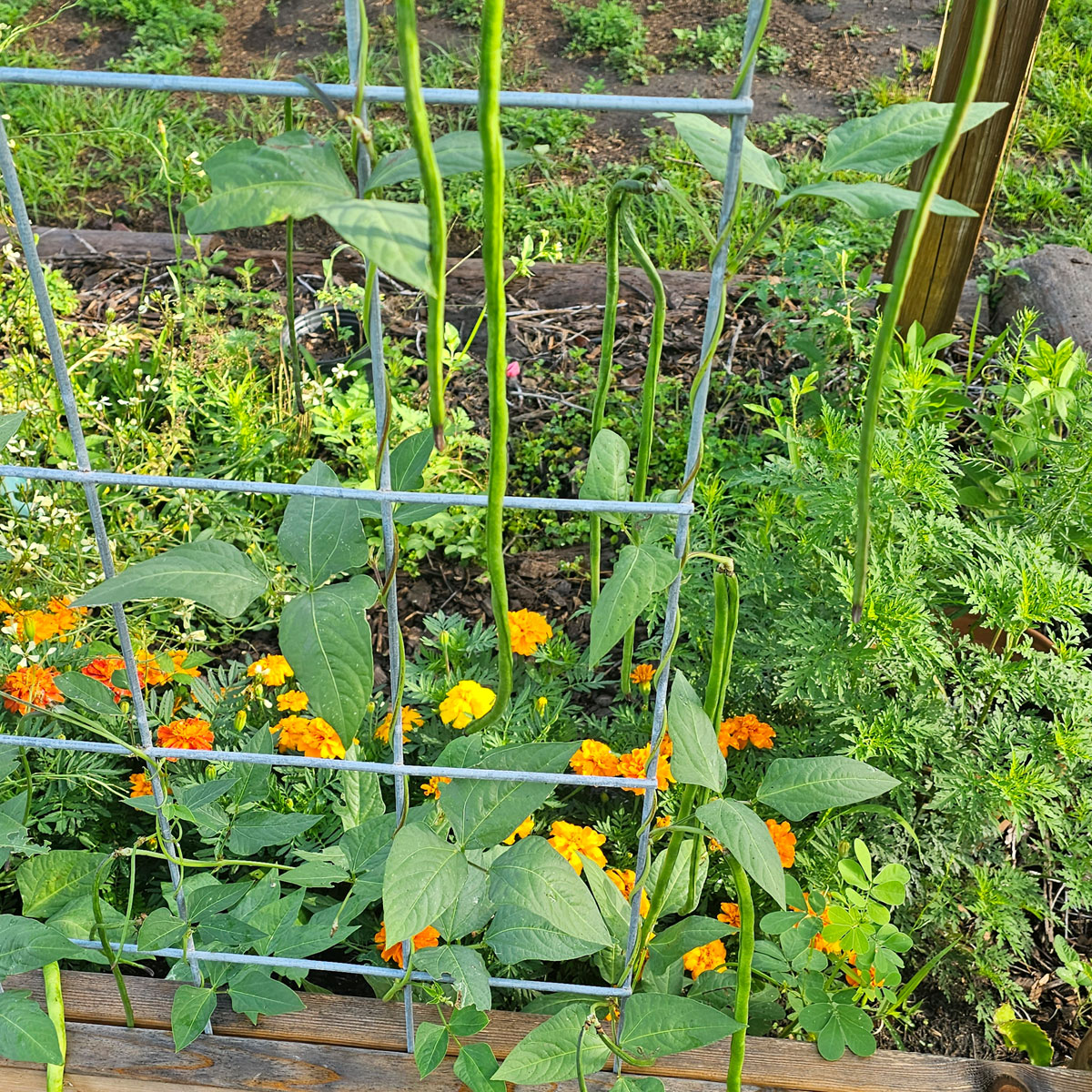
Long Beans. Also known as the Chinese long bean, yard-long bean, snake bean, or asparagus bean, these climbing beans take a while to get going, but once they start flowering, they produce an abundance. I enjoy walking out to the garden, gathering a handful and cooking them with a meal. They’ll grow almost all summer long.
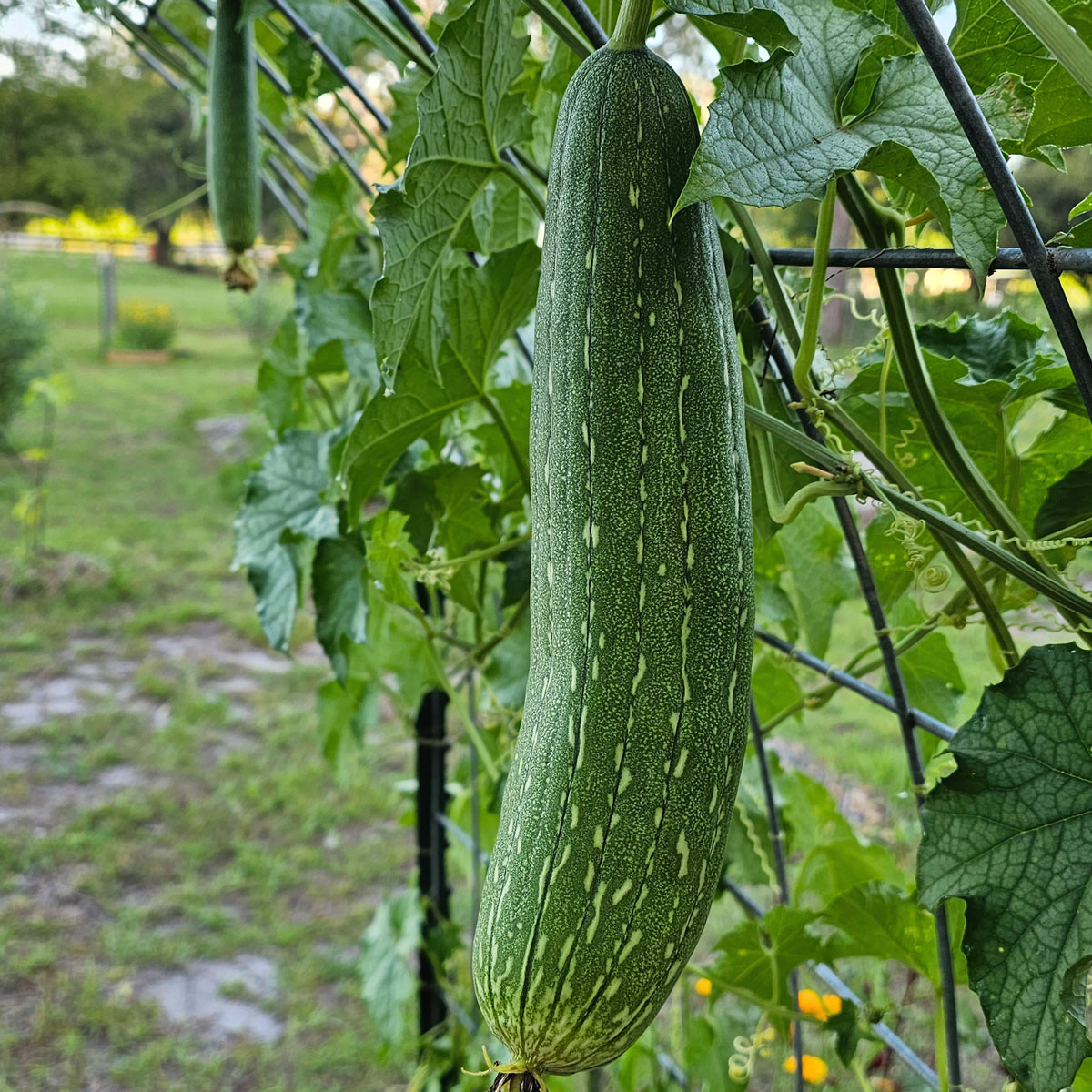
Luffa. This gourd is well known as a natural sponge, but it’s also great for eating! Luffa is native to Asia and grows best in hot weather, acidic soil, and at least 6 hours of daylight. There are 2 types of luffas: angled and ball. The angled luffa is the more edible of the two, while the ball variety is used for making sponges. However, both can be eaten like zucchini. Harvest for eating before they get too fibrous, about 6-8 inches long. Read How to Grow Luffa to learn more!

Roselle. This plant is also related to okra and is a member of the mallow plant family. It’s grown for the rich, cranberry-red calyxes used for flavoring teas and other beverages. The leaves are also edible with a tangy, almost lemony flavor. As a leafy green, they can spice up salads. Roselle is often confused with Cranberry Hibiscus and Edible Hibiscus. Learn their differences from my post Cranberry Hibiscus, Sorrel, or Roselle?
Other Tried and True Heat-Lovers
While the above list are my favorites, there are plenty more edibles that thrive in the heat. Here is a quick list of plants recommended to grow during the hot summer.
- Amaranth
- Eggplant
- Cucumber
- Corn
- Lima beans
- New Zealand Spinach
- Okra
- Tomatillos and ground cherries
- Tomatoes
- Swiss Chard
- Watermelon
- Zucchini and summer squashes
Florida Favorites
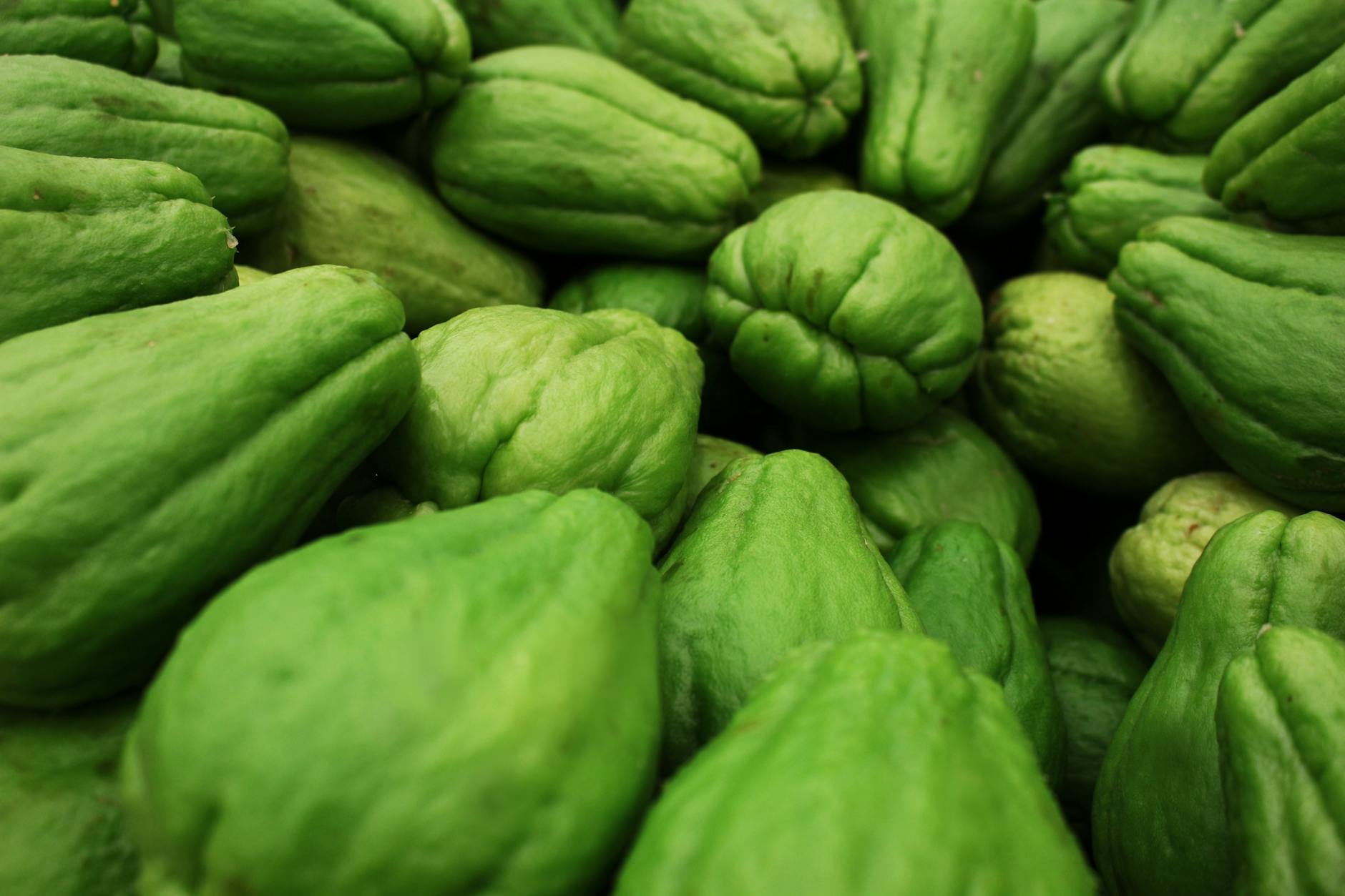
With it’s unique set of climates across the state, Floridians can grow in their gardens year-round. All the plants listed above will thrive in our warm weather, and many in our hot weather.
Here are some additional edibles that tolerate the sub-tropics and tropical climate of our state.
- Cassava
- Chaya
- Chayote
- Collards
- Cucamelon
- Katuk
- Malanga
- Sunchokes (Jerusalem artichokes)
To learn more about growing vegetables in Florida, use this handy chart from the University of Florida to grow specific vegetables.
Tips for Choosing the Best Varieties
When choosing seeds or seedlings for your summer garden, there are several key things to look.
Variety names and descriptions. When searching seed catalogs or looking at seed packets, look for varieties with descriptions such as: “humid-tolerant,” “heat-set,” or references to origins in hot, southern climates. Descriptions that mention tolerance to high temperatures, humidity, and disease resistance are also good signs.
Days to Maturity. If you wish to plant early and beat the late summer heat, look for shorter season varieties. We do this with our corn, tomatoes, and potatoes to get them grown and harvested before the strongest heat of mid and late summer.
Bush and vine type. Look for varieties that grow with plenty of leaf space for good air flow. This will help deter many fungal diseases that are common in humid areas.
Hybrid Vigor. Many hybrid plants are bred to resist pests and diseases that are common in heat and humidity. Seed catalogs will note any traits specific to each variety such as “heat-tolerant” or “disease resistance.”
Regional Varieties. Check with your local extension service for recommendations of plants that grow well in your area. Join local online gardening groups and learn what others are growing and which varieties they recommend for growing in the heat and humidity.
Where to Find Seeds and Seedlings
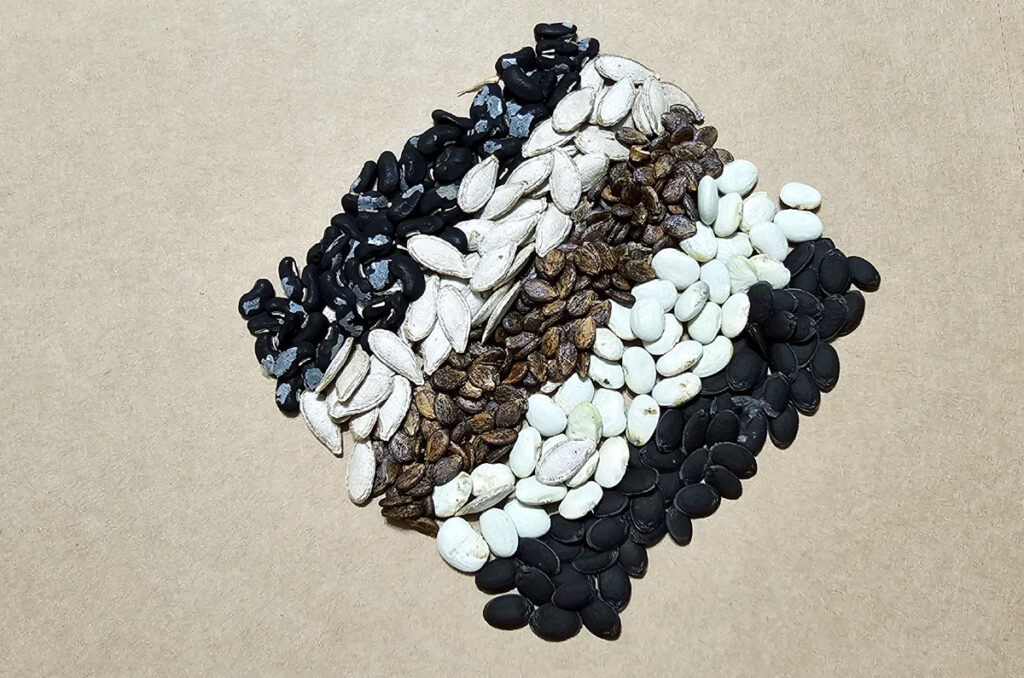
Sourcing seeds locally is your best bet for success in the garden. Seeds that have been grown and raised nearby and have adapted to regional growing conditions.
Choose from places like local nurseries, regional seed companies, university extension services, local or online seed swaps, seed libraries, and small (often family-owned) regional growers. You can buy seeds from my Etsy shop HomesteadByDesign during certain growing seasons.
Seed companies that I use and recommend include:
In Conclusion
Growing a productive edible garden in the scorching heat of summer can be challenging, even for those of us with years of experience.
By choosing plants that are adapted to, and thrive in high temperatures and humidity, you can enjoy a bountiful gardening season.
When selecting specific varieties, be sure to look for words and phrases that suggest a tolerance for heat and humidity.
Source seeds as locally as possible, and prioritize regional heirlooms and hybrids bred specifically for your climate.
With a little research, and the right variety choices, you can beat the heat and continue enjoying a constant supply of fresh homegrown produce, even in the steamiest summer months.
Read next: How to Beat the Heat in Your Florida Garden.
FAQs
Provide afternoon shade with shade cloth or strategically planted taller plants. Mulch well to retain soil moisture. Consider using transplant starters rather than direct seeding when temperatures are excessive.
Watch for signs like wilting, leaf curling/discoloration, stunted growth, failure to set fruit, or dropping leaves/fruit. Intervene with shade, consistent watering, and avoiding pruning/transplanting during peak heat.
You can start heat-tolerant crops earlier under row covers or in protected structures like cold frames. Or try succession planting every few weeks for a longer harvest period into fall.